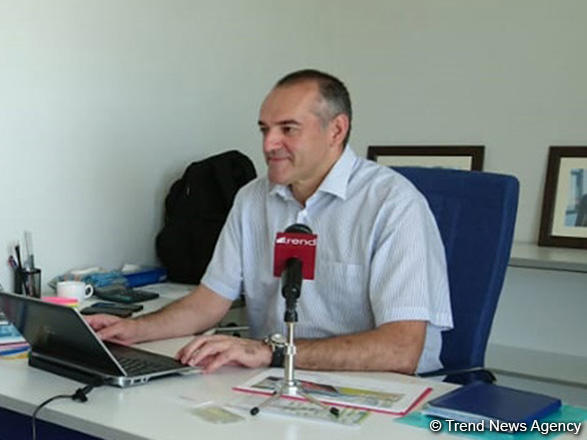Baku, Azerbaijan, July 4
By Fikret Dolukhanov – Trend:
Automation of metro and urban train systems has its pros and cons, but at the end of the day it’s not a constructor who decides on implementation, Bernard Peille, Alstom managing director for Western and Central Asia Cluster, told Trend in an exclusive interview, commenting on gradual automation of transportation technology.
Peille noted that even though automation leaves fewer jobs for drivers, on the other hand any fully automatic system would require more maintenance, engineering, follow-up, tracking data to make sure that it is continuing to run properly.
“Alstom’s position is quite simple: to be always in position to satisfy the demand of our customers, whether we talk about trains with drivers, trains with conductors, or about fully automatic trains with all safe environment. Let’s not forget that when we talk about fully automatic trains the main concern for the operator is always how safe it is going to be. Alstom has corresponding solutions to provide very safe equipment as well,” the managing director said.
Peille added that depending on maturity of the metro system some cities want to move to automation, whereas others prefer to stay with drivers.
The managing director of the French company also noted that development of such technology is not an easy thing to implement because the corresponding environment has to be prepared long ago.
“We can see very few projects of automatic train lines around the world, such as the ones in Paris and Shanghai. There are very few cities which started to adopt such solutions,” Peille said.
The managing director of the French company noted that such systems are extremely safe.
“It’s clear that all protocols are being put in place. Operators and constructors have developed very advanced systems to make sure that everything is running properly in the safest manner and passengers feel very comfortable being in a train that is fully automated,” Peille concluded.
The first line to be operated with Automatic Train Operation (ATO) was London Underground's Victoria line, which opened in 1967, although a driver is present in the cabin. Many lines across the world now operate using an ATO system, with the aim of improving the frequency of service.
Since then, ATO technology has been developed to enable trains to operate even without a driver in a cab: either with an attendant roaming within the train, or with no staff on board. The first fully automated driverless mass-transit rail network is the Port Island Line in Kobe, Japan. The second in the world (and the first such driverless system in Europe) is the Lille Metro in northern France.
Fully automated trains are the machines adhering to the Grade of Automation 4 (GoA4). In such systems trains are capable of operating automatically at all times, including door closing, obstacle detection and emergency situations. On-board staff may be provided for other purposes, e.g. customer service, but are not required for safe operation.
Alstom is a major French engineering company, one of the world leaders in production of power equipment and railway transport.
In September 2017, it was announced that Alstom will become the core of the new Siemens-Alstom concern, which will also include German Siemens and Siemens Mobility. The German company will get just over 50 percent of the shares.
---
Follow the author on Twitter: @FDolukhanov






